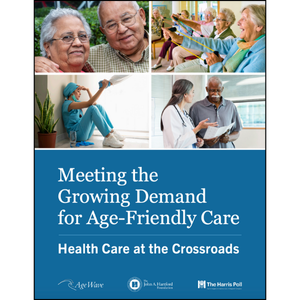Study: More insurance options can improve long-term services and supports
A public/private solution is needed to help aging people plan for and meet their long-term services and supports (LTSS) needs, according to a new report.
Results from a modeling study by the Urban Institute and Milliman, Inc. were announced today to a packed crowd at the National Press Club in Washington. The study explored the amount of long-term help people need with routine activities tasks like walking, eating and getting out of bed. It was funded by LeadingAge, The SCAN Foundation and AARP.
“We are excited and optimistic about what the results from this study reveal: there are options that can help the family pocketbook, help the taxpayer, and relieve the Medicare financial burden,” said LeadingAge President and CEO Larry Minnix. “The bad news is that our aging society will have problems they don’t know they will encounter. But the good news is that there are solutions to help people plan better and relieve financial pressure.”
Urban and Milliman, Inc. modeled several insurance options to demonstrate how new policies might shape the impact of LTSS costs on families and Medicaid. The authors found “no ideal solution” after comparing alternatives to each other and the current situation. They did, however find important differences among the alternatives they hope can help ground future discussions.
Key takeaways about the financial impact of paying for LTSS:
- The average amount a woman can expect to pay in LTSS as she ages is $182,000. The average amount for a man is $91,000.
- Fifty-two percent of Americans who reach age 65 will someday need a high amount of help with everyday activities.
- Families spend more than $100 billion annually to cover about half of paid care directly.
America’s aging population faces an unprecedented number of chronic conditions such as Alzheimer’s disease, Parkinson’s disease, heard disease and diabetes. Those conditions come with unprecedented costs.
Medicaid covers these services for Americans with certain disabilities and limited incomes and assets. The number of middle-class Americans purchasing private long-term care insurance declined in the past decade. Policymakers believe more Americans would purchase insurance if the plans changed and costs reduced.
Read the Web first report here.

Nicole was Senior Editor at I Advance Senior Care and Long Term Living Magazine 2015-2017. She has a Journalism degree from Kent State University and is finalizing a master’s degree in Information Architecture and Management. She has extensive studies in the digital user experience and in branding online media. She has worked as an editor and writer for various B2B publications, including Business Finance.
Related Articles
Topics: Medicare/Medicaid










